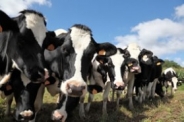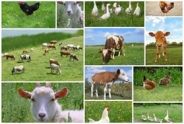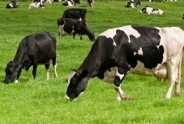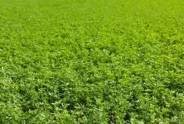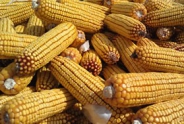Stockpiling Pastures
Nancy Glazier, Small Farms & Livestock Specialist
Northwest New York Dairy, Livestock & Field Crops
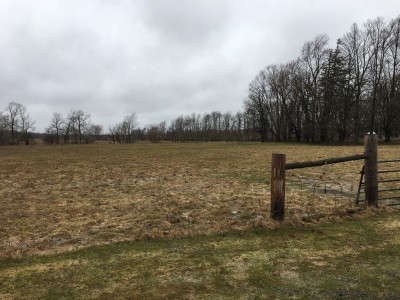
There has been some discussion amongst technical service providers that operate their own farms regarding stockpiling pastures. There are basic resources around, but an attempt is being made to take it to the next level.
The theory behind stockpiling is to save some pasture for late fall/early winter grazing. Livestock are moved off the pastures that are set aside for stockpiling early to mid-August. It is recommended to apply 50-75 lb actual Nitrogen fertilizer to give the grasses a boost. With timely late August - early September rains, pastures will grow and reduce the need for feeding hay, and if livestock are normally fed in a barn, the manure is out on pastures.
Some of the recent exchanges before contemplating stockpiling are below. What is the fertility of your pastures? Ideally, soil samples are taken periodically, so you know this answer. Do they need some Phosphorus and Potassium? Apply that along with the Nitrogen.
Poultry litter would give your pastures a jump start for stockpiling. A general analysis of litter is 3-3-2. You'll need about a ton/acre to achieve an adequate amount of N (60 lb/ac). The organic matter will be beneficial for the long term, too.
Work has been done on species selection for stockpiling. Typically tall fescue is the best due to its standability, yield, and quality. There is less tall fescue grown in NWNY compared to orchardgrass, reed canarygrass, bromegrasses, or timothy. They will stockpile but not as well as tall fescue. Alfalfa will stockpile and handle stockpiling and grazing better than late-season mechanical harvest. Clovers will not withstand stockpiled grazing well.
It may be worthwhile to clip pastures and/or graze ‘tight' prior to stockpiling, particularly if they have gone to seed. If not, there may be more stemmy growth and less leaves.
For best utilization it is important to strip-graze the stockpiling. Use high density of livestock on small strips to graze effectively, set up in calculated amounts. These can be subdivided with temporary fencing, and this may take some trial and error to set up the amount of pasture available. One estimate from a beef producer is pasture utilization may be up to 90% with daily moves.
Some questions to ponder:
Do you have extra acreage available for stockpiling? What are the economics of stockpiling? Obviously, there is savings if you feed less hay, due to harvesting costs. What is the value of the land - taxes or rent? Could additional livestock be grazed during the season, such as dairy heifers, stockers, or ewes with lambs that may leave the farm prior to the end of the season? Does heavy grazing affect spring growth? Should some residual be left? What about the early season snowfall? How does that affect quality?
I would be interested to hear from anyone who is experimenting with stockpiling and what are your experiences, both good and bad. Give me a call or drop me an email at nig3@cornell.edu. I would really like to hear!
Upcoming Events
Pasture Walk at C&H Farms of WNY, LLC
August 26, 2025
Akron, NY
C&H Farms is new to grazing beef cows. Come out to view, discuss, and learn what is working and what needs some adjusting.
Dairy Bovine Reproduction and Artificial Insemination Training Course en Espanol
October 14 - October 15, 2025
Join us for a two-day workshop with hands-on training that will be offered in Spanish in cooperation with Javier Cheang, Genex. Space is limited, register today!
Inaugural New York State Agritourism Conference
November 10 - November 11, 2025
Saratoga Springs, NY
SAVE THE DATE! Inaugural NEW YORK STATE AGRITOURISM CONFERENCE presented by Cornell Cooperative Extension Agritourism Program Work Team
Announcements
We're Hiring: Area Dairy Management Specialist
To apply:Please apply via Academic Jobs Online (https://academicjobsonline.org/ajo/jobs/30185).
Qualified candidates should submit a short cover letter, curriculum vitae, and contact information for three references.
Applications must be submitted by July 31, 2025.
For more information, please contact Peter Landre at ptl2@cornell.edu. Additional information about the Northwest New York Dairy, Livestock and Field Crops Team can be found at https://nwnyteam.cce.cornell.edu/.

